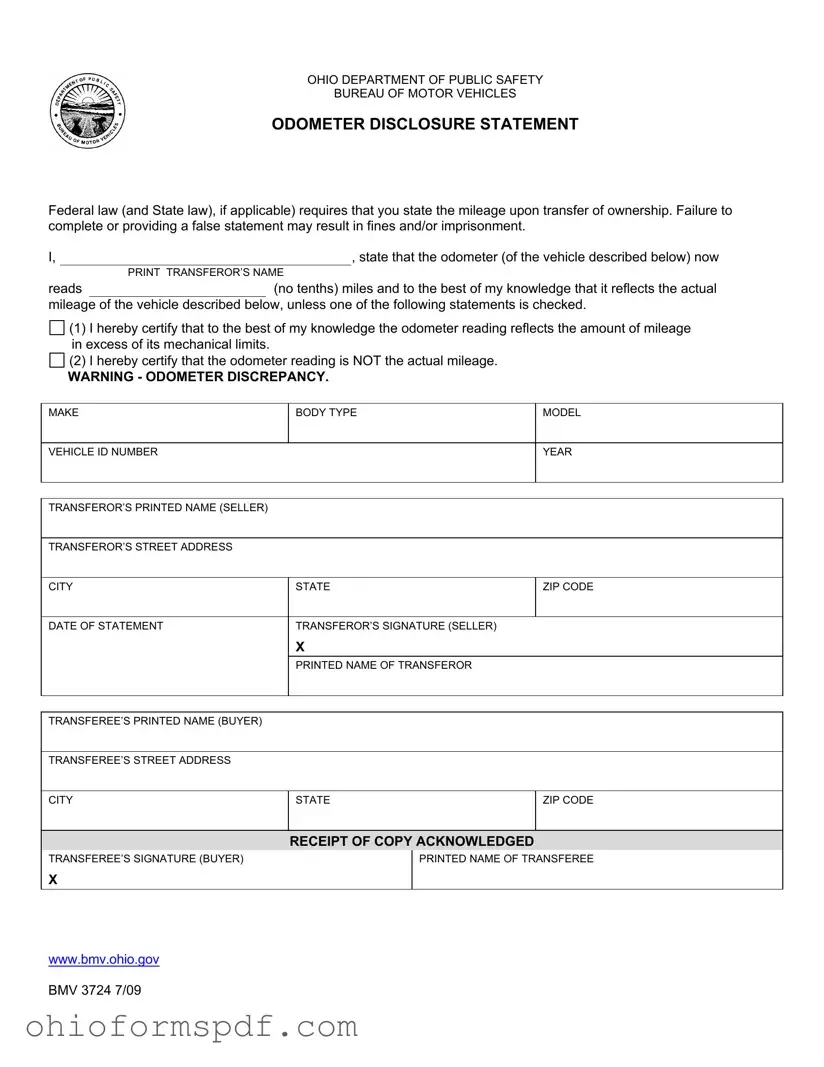The Vehicle Bill of Sale is remarkably similar to the Ohio Department of Public Safety form, primarily because it also documents the transfer of ownership of a vehicle between two parties. The Bill of Sale typically includes detailed information about the vehicle being sold, such as make, model, year, and the vehicle identification number (VIN), alongside the odometer reading, similar to the Ohio form. Furthermore, both documents require the printed names and signatures of the seller and buyer, ensuring a legal record of the transaction.
Another document bearing resemblance to the Ohio Department of Public Safety form is the Title Transfer form. This form is essential when the ownership of a vehicle is being transferred. It requires information about the vehicle, similar to the Ohio form, including the odometer reading at the time of sale. Both forms are crucial for updating the records held by the Department of Motor Vehicles (DMV) to reflect the current owner and state of the vehicle.
The Odometer Disclosure Statement itself, which is a part of the Ohio form, is closely related to the standalone Odometer Disclosure Statements used in many other states. This disclosure is a federal requirement and aims to prevent odometer fraud by documenting the mileage of a vehicle at the time of sale. Though formats may vary, the essence of capturing accurate mileage information and acknowledging the possibility of mileage discrepancies remains constant.
The Warranty Deed is somewhat analogous to the Ohio Department of Public Safety form, albeit for real estate transactions. Like the Ohio form, a Warranty Deed guarantees that the seller holds clear title to the property and has the right to sell it. It includes detailed information about the property and the parties involved in the transfer, much like how vehicle details and owner information are provided in the Ohio document for vehicle transactions.
Lease Agreements, while focused on the rental rather than the sale of property (including vehicles), share commonalities with the Ohio form through the documentation of specific details about the property being leased and the parties involved. In cases where vehicles are leased, odometer readings may also be recorded at the beginning and end of the lease term, emphasizing the importance of accurate mileage tracking seen in the Ohio form.
The Quitclaim Deed, used to transfer any ownership interest in a property without guaranteeing the title's validity, parallels the Ohio form through its function of transferring interest from one party to another. Though it typically pertains to real estate, the concept of transferring rights or interest, and the requirement for both parties to provide signatures and personal information, aligns closely with the vehicle transfer process outlined in the Ohio document.
Lastly, the General Affidavit is akin to the Ohio Department of Public Safety form because both serve as legally binding documents requiring the signatory to swear to the truthfulness of the information provided within. In the context of the Ohio form, both the seller and buyer affirm the accuracy of the odometer reading and the vehicle information, mirroring the purpose of an affidavit where an individual makes a sworn statement or declaration.
Each of these documents, while serving varied legal functions across different fields, shares a fundamental similarity with the Ohio Department of Public Safety form through their role in recording and affirming key information about a transaction or transfer between parties, thereby ensuring legal compliance and protection for all involved.

